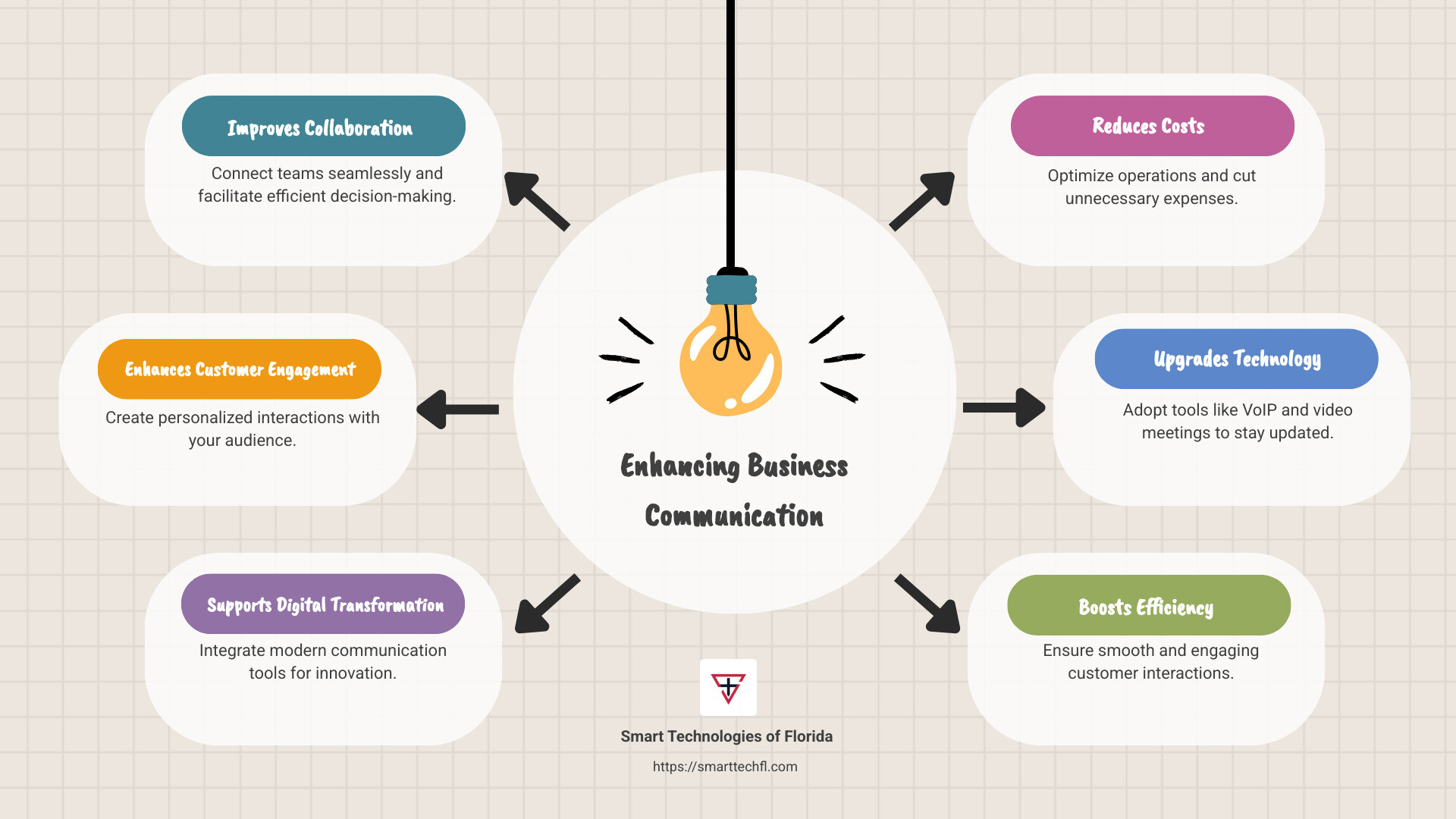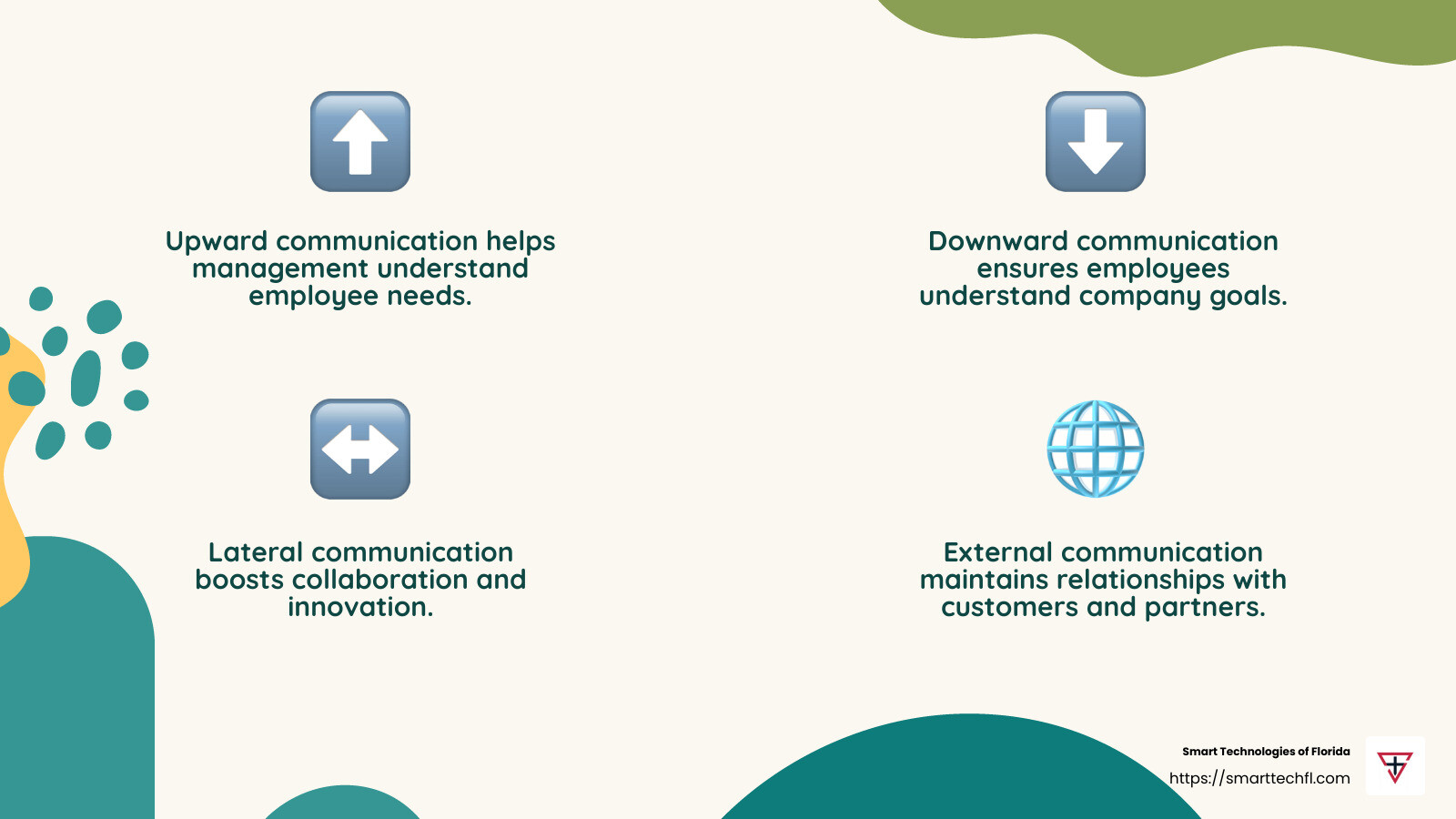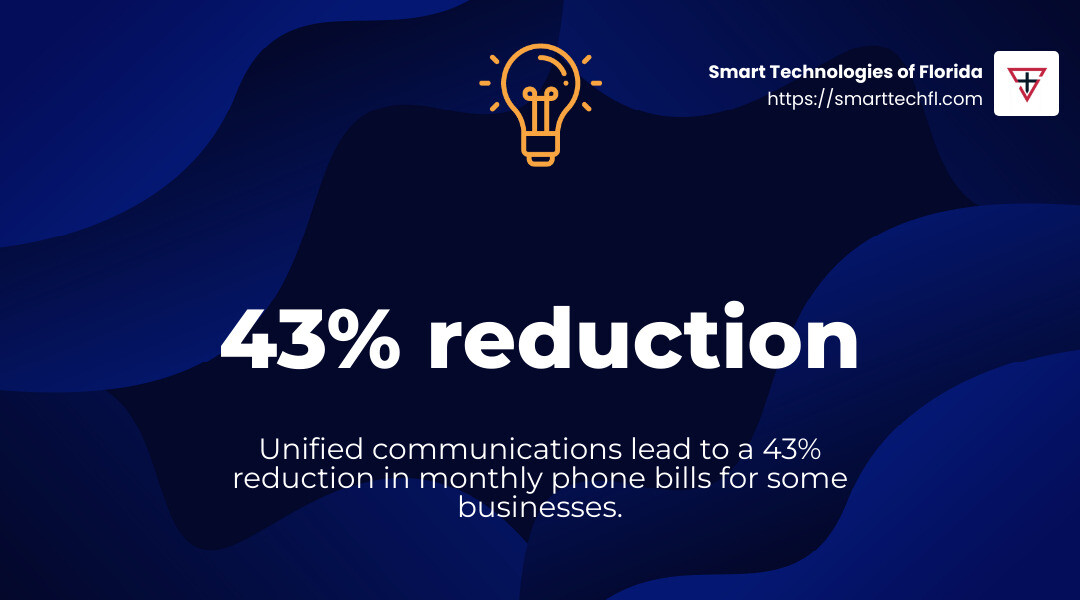How to Navigate Business Communications Support Like a Pro
Business communications support is the backbone of strategic change in today’s digital landscape. Effective communication is not just about exchanging information but also about changing how companies operate and engage with their customers. For business owners eager to boost growth while streamlining processes, understanding and mastering business communications can be a game-changer.
Here’s a quick look at why business communications are essential:
- Improves collaboration: Seamlessly connect teams and facilitate efficient decision-making.
- Improves customer engagement: Create personalized interactions with your audience.
- Supports digital change: Pave the way for innovation by integrating modern communication tools.
- Reduces costs: Optimize operations and cut unnecessary expenses with streamlined communication.
The challenges faced by mid-sized retail businesses often revolve around outdated technology and rising costs. By embracing strategic changes through improved business communications, these businesses can open up new opportunities for growth and efficiency. Integrating tools like VoIP and video meetings not only aids in keeping staff informed and empowered but also ensures that customer interactions are smooth and engaging.
Business communications support is your gateway to a brighter, more connected future.

Understanding Business Communications Support
Business communications support is more than just a buzzword. It’s a crucial element of any successful organization. Let’s break down the four main types of communication within a business: upward, downward, lateral, and external.
Upward Communication
Upward communication flows from the lower levels of an organization to the higher levels. It’s how employees provide feedback, report progress, or share ideas with management. This type of communication is vital for understanding employee needs and addressing any concerns that might arise.
Imagine a mid-sized retail business where employees on the shop floor notice a recurring customer issue. By effectively using upward communication, these employees can relay this information to management, who can then implement a solution. This not only improves customer satisfaction but also improves the overall efficiency of the business.
Downward Communication
Downward communication moves from the top down. It’s how management communicates policies, instructions, and feedback to employees. Clear and effective downward communication ensures everyone is on the same page and understands the company’s goals and expectations.
Consider a scenario where a company is rolling out a new product. Through downward communication, the leadership can efficiently inform employees about the product details, marketing strategies, and sales targets. This ensures that every team member is equipped with the knowledge needed to contribute to the product’s success.
Lateral Communication
Lateral communication occurs between employees or departments at the same organizational level. It facilitates collaboration and helps teams work more efficiently. When employees share information and resources laterally, it can lead to innovative solutions and improved productivity.
For example, in a company with both marketing and sales departments, lateral communication can help align their strategies. By sharing insights and data, these teams can create more cohesive campaigns that drive better results.
External Communication
External communication is how a business interacts with people outside the organization, such as customers, suppliers, and partners. It’s crucial for building and maintaining relationships, managing the company’s reputation, and ensuring smooth operations.
A business that excels in external communication can create strong customer relationships and foster loyalty. For instance, by using unified communication platforms, a company can provide consistent and personalized customer service across various channels, enhancing the overall customer experience.

Incorporating effective business communications support into your strategy can transform how your business operates. By mastering these four types of communication, you not only improve internal processes but also create a more engaging and responsive experience for your customers.
Next, we’ll explore the essential skills needed to excel in business communications.
Essential Business Communication Skills
Mastering business communications support requires more than just understanding types of communication. It involves honing key skills that make every interaction effective. Let’s explore three essential skills: active listening, negotiation, and networking.
Active Listening
Active listening is more than just hearing words. It’s about truly understanding the message being conveyed. This skill involves giving full attention, asking clarifying questions, and providing feedback.
Imagine a project manager in a tech company. During a team meeting, they notice a developer expressing concerns about a new software feature. By practicing active listening, the manager can fully understand the developer’s perspective and address any issues before they escalate. This not only resolves potential conflicts but also builds trust within the team.
Negotiation
Negotiation isn’t just for boardrooms. It’s a daily part of business life, whether you’re dealing with suppliers, clients, or colleagues. Effective negotiation requires clear communication, understanding different viewpoints, and finding a middle ground.
For instance, consider a small business owner negotiating a contract with a new supplier. By clearly articulating their needs and listening to the supplier’s constraints, they can reach a mutually beneficial agreement. This skill is crucial for maintaining strong business relationships and ensuring fair deals.
Networking Skills
Networking is about building and maintaining professional relationships. It’s not just about exchanging business cards; it’s about meaningful interactions that can lead to future opportunities.
Picture an entrepreneur at an industry conference. By engaging in genuine conversations and showing interest in others’ work, they can form valuable connections. These relationships can lead to partnerships, collaborations, or even new clients down the line.
Mastering these skills can significantly improve your business communications support strategy. They ensure that every interaction is productive, whether it’s within your team or with external partners. Up next, we’ll look at specific solutions that can lift your business communication game even further.
Business Communications Support Solutions
In today’s business world, having the right business communications support tools is crucial. Let’s explore three powerful solutions: VoIP, video meetings, and unified communications.
VoIP (Voice over Internet Protocol)
VoIP is changing how businesses handle phone calls. Instead of using traditional phone lines, VoIP uses the internet to transmit voice data. This shift brings significant cost savings and flexibility.
- Cost Savings: Switching to VoIP can save businesses a lot of money. For example, VoIP services often range from $20 to $50 per user per month, which is generally cheaper than traditional phone systems. Plus, there’s no need for expensive hardware or maintenance.
- Flexibility: VoIP allows employees to make calls from anywhere with an internet connection. This is perfect for remote work or businesses with multiple locations, like Smart Technologies of Florida in Daytona Beach.
- Advanced Features: VoIP offers features like call forwarding, call waiting, and even video calls, making it a versatile tool for communication.
Video Meetings
Video meetings have become essential, especially with the rise of remote work. They offer a face-to-face interaction that emails and phone calls can’t match.
- Improved Collaboration: Video meetings allow teams to collaborate in real time, regardless of their physical location. This helps maintain a sense of connection and teamwork.
- Improved Communication: Seeing facial expressions and body language can lead to better understanding and fewer miscommunications.
- Efficiency: Video meetings save time and travel costs, making them a practical choice for businesses looking to streamline operations.
Unified Communications
Unified communications (UC) is all about bringing different communication tools together in one platform. This integration offers several benefits:
- Seamless Experience: With UC, employees can switch between calls, messages, and video meetings without hassle. This seamless experience boosts productivity and ensures that communication is smooth and efficient.
- Centralized Management: UC platforms provide a single interface to manage all communication channels. This reduces the complexity and makes it easier to oversee business communications.
- Improved Customer Experience: By using UC, businesses can deliver consistent messaging across all channels, improving customer service and satisfaction.

These solutions are not just about technology; they’re about creating a more connected and efficient workplace. By adopting VoIP, video meetings, and unified communications, businesses can lift their communication strategies and stay ahead in a competitive market.
Up next, let’s explore the benefits of effective business communications support and how it can transform your organization.
Benefits of Effective Business Communications Support
Effective business communications support is more than just a fancy term. It’s a game-changer for any organization. Let’s explore how it brings clarity, consistency, and productivity.
Clarity
Clear communication is like a clean window—it lets everyone see the view without distortion. When teams understand tasks and goals, they can work more effectively.
- Reduced Misunderstandings: Clear communication ensures everyone is on the same page. This minimizes mistakes and reduces the need for follow-up questions.
- Better Decision-Making: When information is clear, decisions are based on facts rather than assumptions. This leads to more successful outcomes.
Consistency
Consistency in communication builds trust and reliability. It’s about delivering the same message across all channels and to all stakeholders.
- Unified Messaging: With consistent communication, whether it’s through emails, meetings, or reports, everyone hears the same message. This prevents confusion and aligns team efforts.
- Brand Integrity: For customer-facing communications, consistency ensures that your brand’s voice and values are always represented accurately. This strengthens brand reputation and customer loyalty.
Productivity
When communication flows smoothly, productivity naturally follows. Teams can focus on their work rather than deciphering unclear messages.
- Efficient Workflows: Effective communication tools streamline processes. For example, unified communications allow employees to switch between tasks without losing momentum.
- Time Savings: Clear and concise communication saves time. Teams spend less time clarifying tasks and more time executing them.
- Improved Collaboration: With tools like video meetings and VoIP, teams can collaborate in real-time, regardless of location. This fosters a collaborative culture and boosts overall productivity.
By focusing on clarity, consistency, and productivity, effective business communications support transforms organizations. It not only improves internal operations but also improves external relationships with clients and partners.
Next, we’ll address frequently asked questions about business communications support to further deepen your understanding.
Frequently Asked Questions about Business Communications Support
What are the 4 types of business communication?
Understanding the different types of business communication helps improve efficiency and teamwork. Here are the four main types:
- Upward Communication: This is when information flows from the lower levels of an organization to the higher levels. It’s like a feedback loop, where employees share their ideas, feedback, or reports with managers. This type of communication is crucial for decision-making and improving processes.
- Downward Communication: This is the opposite of upward communication. Information flows from the top of the organization to the bottom. Managers and leaders use this to give instructions, share updates, or align the team with company goals. It ensures everyone knows what they need to do.
- Lateral Communication: Also known as horizontal communication, this happens between employees on the same level. It’s essential for collaboration and team projects. Lateral communication helps in sharing information quickly and solving problems together.
- External Communication: This involves interaction with people outside the organization, like customers, suppliers, or partners. Effective external communication builds relationships and improves the company’s reputation.
What is business communication services?
Business communication services include tools and platforms that facilitate effective communication within and outside an organization. Two popular services are:
- VoIP (Voice over Internet Protocol): This technology allows you to make voice calls using a broadband internet connection instead of a regular phone line. It’s cost-effective and offers features like call forwarding, voicemail, and conference calling, enhancing communication flexibility.
- Video Meetings: Platforms like Zoom and Microsoft Teams allow teams to meet virtually, regardless of location. Video meetings are vital for remote work, enabling face-to-face interactions, sharing presentations, and fostering team collaboration.
Is a business communications degree worth it?
A degree in business communications can open many doors. Here’s why:
- Employment Opportunities: Companies value employees who can communicate well. A degree in business communications equips you with skills needed in diverse roles, from PR and marketing to HR and management.
- Professional Communication: The degree helps you master the art of professional communication. You’ll learn how to craft messages, present ideas, and engage audiences effectively, which are crucial skills in any job.
In summary, understanding the types of communication and using the right tools can significantly improve business operations. A degree in business communications further empowers you with the skills needed to excel in various professional settings.
Conclusion
At Smart Technologies of Florida, we believe that effective business communication is the backbone of any successful organization. Our people-centric approach ensures that every solution we offer is custom to meet the unique needs of our clients. We understand that strategic change is not just about adopting new technologies but also about empowering people to communicate better and work smarter.
Our 23 years of experience in business change have shown us that the right communication tools can revolutionize how a company operates. By focusing on strategic change and innovation, we help businesses align their communication strategies with their goals. This alignment is crucial for fostering a collaborative environment where ideas flow freely, and everyone is on the same page.
Whether you’re enhancing upward communication to gather valuable insights from your team, or improving external communication to strengthen relationships with clients, our solutions are designed to support you every step of the way. From VoIP to video meetings, our business communication solutions are crafted to ensure clarity, consistency, and productivity.
In a rapidly changing business landscape, having a partner like Smart Technologies of Florida can make all the difference. We are committed to driving strategic change that not only meets but exceeds your business communication needs. Let’s transform the way you communicate and help your organization reach new heights.












